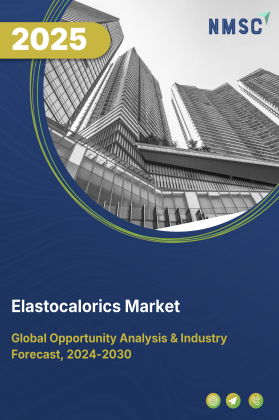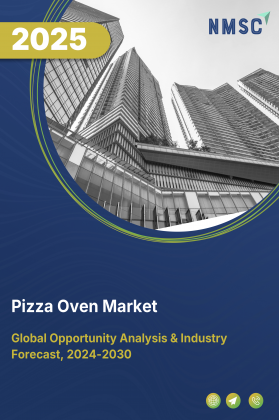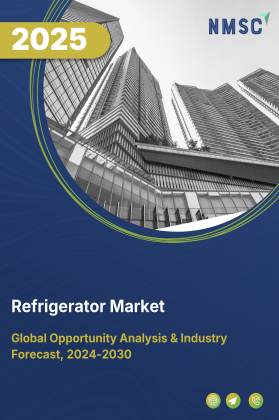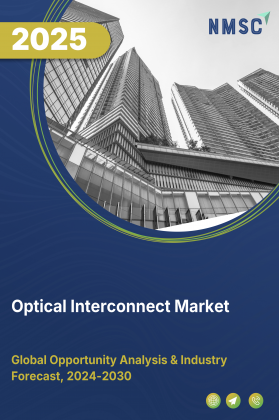
Elastocalorics Market by Material Type (Shape Memory Alloys, and Others), by Technology Integration (Standalone Systems, Hybrid Systems, Actuation Technology), by Cooling Power Capacity (Low, High Capacity and Others), by Operational Mode (Active, Passive Cooling), by Performance Metrics (COP, ΔT, Cycling Durability), by Application (Refrigeration, and Others), by End-User (Residential, Commercial & Office Buildings and Others) – Global Opportunity Analysis and Industry Forecast, 2025–2030
Industry Outlook
The global Elastocalorics Market size was valued at USD 61.3 million in 2024 and is estimated to reach USD 82.2 million in 2025 and is predicted to reach USD 356.5 million by 2030 with a CAGR of 34.1% from 2025-2030.
The elastocalorics market is gaining momentum as a next-generation cooling technology, offering eco-friendly, efficient, and refrigerant-free alternatives to conventional systems. Driven by rising demand for sustainable solutions, elastocalorics are addressing critical needs in refrigeration, air conditioning, automotive, and electronics sectors, particularly with the growth of EVs and data centers. Strong government and research funding is accelerating material innovation and commercialization, while high material and system costs remain a restraint to large-scale adoption.
At the same time, emerging opportunities in healthcare and medical devices, where precise and safe cooling is vital, position elastocalorics as a transformative solution in meeting global sustainability and efficiency goals.
Eco-Friendly Cooling Demand Drives the Market Growth
Eco-Friendly Cooling Demand is a major driver of the elastocalorics industry. Traditional cooling technologies rely heavily on hydrofluorocarbons (HFCs) and other refrigerants with high global warming potential (GWP), which are being phased out under international agreements like the Kigali Amendment. Elastocaloric systems, by contrast, use solid-state materials such as shape memory alloys instead of harmful gases, making them a clean, safe, and sustainable alternative.
With increasing global focus on reducing carbon footprints, meeting stricter environmental regulations, and achieving net-zero goals, demand for eco-friendly cooling solutions is rising sharply. This positions elastocalorics as a transformative technology in refrigeration, air conditioning, automotive, and electronics cooling markets.
Growing Applications in EVs & Electronics Boosts the Market Demand
Growing Applications in EVs & Electronics are strongly driving the elastocalorics market growth. Electric vehicles require highly efficient thermal management for batteries, power electronics, and cabin climate control to ensure safety, performance, and extended driving range. Similarly, the rapid growth of data centers, 5G infrastructure, and consumer electronics demands advanced cooling systems that handle rising heat loads without increasing energy consumption.
Elastocaloric technology offers compact, efficient, and refrigerant-free cooling solutions, making it highly attractive for these sectors. As EV adoption accelerates globally and electronics become more powerful yet miniaturized, elastocalorics are emerging as a next-generation solution to meet these growing cooling challenges.
Government & Research Funding Fuels Market Expansion
Government & Research Funding plays a crucial role in driving the elastocalorics market demand. Since elastocaloric cooling is still in the early stages of commercialization, significant public and private R&D investments are essential to advance material science, improve device durability, and scale up prototypes into market-ready systems. Governments across Europe, North America, and Asia-Pacific are supporting solid-state cooling technologies through innovation grants, sustainability programs, and climate-focused initiatives to replace high-GWP refrigerants.
Research institutions, backed by EU Horizon programs, US DOE initiatives, and national innovation funds, are accelerating breakthroughs in shape memory alloys and elastomer materials. This strong funding ecosystem is reducing technological risks and speeding up the path to commercialization for elastocaloric solutions.
High Material and System Costs Limits the Market Growth
One key restraint of the elastocalorics market is high material and system costs. Elastocaloric devices rely on advanced shape memory alloys (such as nickel-titanium) and specialized elastomers, which are expensive to produce and process at scale. Additionally, the manufacturing of elastocaloric systems requires precision engineering to ensure durability and efficiency under repeated mechanical stress, further increasing costs. These high upfront expenses make it challenging to compete with well-established, lower-cost conventional cooling technologies, slowing down widespread adoption despite the environmental and efficiency advantages.
Rise in Healthcare and Medical Devices Sector Creates New Growth Opportunities for the Market
A key growth opportunity for the market lies in the healthcare and medical devices sector. Medical equipment such as diagnostic machines, laboratory instruments, and thermal therapy devices require highly precise, stable, and environmentally safe cooling solutions. Elastocaloric systems, with their ability to deliver efficient and localized temperature control without toxic refrigerants, are well-suited for these applications. As the demand for sustainable medical technologies rises and healthcare infrastructure expands globally, elastocalorics have the potential to capture a strong niche in this specialized but rapidly growing the elastocalorics market expansion.
Market Segmentation and Scope of Study
The elastocalorics market report is segmented by material type, technology integration, cooling power capacity, operational mode, performance metrics, application, end-user, and region. By material type, it includes shape memory alloys, elastomers, polymers, hybrid materials, and others. By technology integration, it covers standalone elastocaloric systems, hybrid systems, and actuation technologies. By cooling power capacity, the market is divided into low, medium, high, and very high capacity. By operational mode, it is classified into active and passive cooling. By performance metrics, it includes coefficient of performance, adiabatic temperature change, and cycling durability. By application, the market spans refrigeration, air conditioning, automotive, electronics, industrial, medical, and others. By end-user, it covers residential, commercial, industrial, automotive, healthcare, IT & data centers, aerospace & defense, and others. Regional analysis includes North America, Europe, Asia-Pacific, and RoW.
Geographical Analysis
North America is witnessing strong growth in the elastocalorics market share, driven by its push for sustainable and energy-efficient cooling technologies. With stringent U.S. EPA regulations targeting the phase-out of high-GWP refrigerants, demand is rising for eco-friendly alternatives. Elastocaloric systems, which are refrigerant-free and highly efficient, align with regional climate goals. Moreover, government-backed R&D programs and venture capital investments are further accelerating commercialization across HVAC, automotive, and data center applications.
Europe is driving the growth of the market through its strict environmental policies and strong commitment to carbon neutrality. The European Union’s regulations to phase out high-GWP refrigerants, combined with ambitious sustainability targets under the Green Deal, are creating strong demand for eco-friendly cooling alternatives. Elastocaloric systems, offering energy efficiency and refrigerant-free operation, align well with these goals. Additionally, significant EU research funding programs, such as Horizon Europe, are supporting R&D initiatives and pilot projects, accelerating the region’s path toward commercialization in HVAC, automotive, and industrial applications.
Asia Pacific is becoming a vital growth hub for the market, supported by rapid urbanization and the surging need for sustainable cooling. According to the World Bank, in 2024 the urban population accounted for 37% in India and 66% in China, reflecting the rising demand for energy-efficient cooling systems in expanding cities. Governments across the region, especially in China, Japan, and South Korea, are investing in advanced materials research and solid-state cooling technologies to reduce reliance on harmful refrigerants. Coupled with the fast adoption of EVs and the expansion of data centers, these factors are positioning elastocaloric systems as next-generation solutions for urban cooling, electronics, and automotive applications in Asia Pacific.
Rest of World is witnessing rising demand for elastocaloric systems, driven by the growing need for reliable data center and IT cooling. With the rapid expansion of cloud computing, AI, and 5G networks in emerging economies, thermal management has become a critical challenge. Traditional cooling systems are energy-intensive and costly, while elastocaloric technologies offer high efficiency, compact design, and refrigerant-free operation. As digital infrastructure scales up across Latin America, the Middle East, and Africa, elastocalorics present a sustainable solution to support the region’s technological growth.
Strategic Innovations Adopted by Key Players
Key players in the Elastocalorics industry are advancing growth through breakthrough material innovations and large-scale technology demonstrations.
-
In May 2025, HKUST discovered a novel Ti₇₈Nb₂₂ elastic alloy achieving temperature changes 20× greater than conventional metals and operating near 90% Carnot efficiency for solid-state heat pumping.
-
In March 2025, HKUST developed the world's first kilowatt-scale elastocaloric cooling device, cooling a model house (2.7 m³) from ~31 °C to ~21–22 °C within 15 minutes at 3.5 Hz frequency.
Key Benefits
-
The report provides quantitative analysis and estimations of the industry from 2025 to 2030, which assists in identifying the prevailing elastocalorics market opportunities.
-
The study comprises a deep-dive analysis of the current and future elastocalorics market trends to depict prevalent investment pockets in the sector.
-
Information related to key drivers, restraints, and opportunities and their impact on the market is provided in the report.
-
Competitive analysis of the players, along with their market share is provided in the report.
-
SWOT analysis and Porters Five Forces model is elaborated in the study.
-
Value chain analysis in the market study provides a clear picture of roles of stakeholders.
Elastocalorics Market Key Segments
By Material Type
-
Shape Memory Alloys (SMAs)
-
Nickel-Titanium (NiTi)
-
Copper-Aluminum-Zinc (CuAlZn)
-
Iron-Manganese-Silicon (FeMnSi)
-
Other SMAs
-
-
Elastomers
-
Natural Rubber (NR)
-
Synthetic Rubber
-
Rubber Blends
-
-
Polymers
-
Elastocaloric Polymers
-
Thermoplastic Elastomers (TPE)
-
Polymer Blends & Composites
-
-
Hybrid Materials
-
SMA-Elastomer Composites
-
Polymer-Metal Composites
-
Ceramics-Polymer Hybrids
-
-
Others
By Technology Integration
-
Standalone Elastocaloric Systems
-
Single-Stage Systems
-
Multi-Stage Systems
-
-
Hybrid Systems
-
Elastocaloric-Thermoelectric
-
Elastocaloric-Magnetocaloric
-
Elastocaloric-Electrocaloric
-
-
Actuation Technology
-
Mechanical Actuation
-
Electromechanical Actuation
-
Pneumatic & Hydraulic Actuation
-
By Cooling Power Capacity
-
Low Capacity (<1 kW)
-
Medium Capacity (1–10 kW)
-
High Capacity (10–50 kW)
-
Very High Capacity (>50 kW)
By Operational Mode
-
Active Cooling
-
Electrically Powered
-
Mechanically Powered
-
-
Passive Cooling
-
Heat Exchange Systems
-
Thermal Storage Systems
-
Phase Change Material Integration
-
By Performance Metrics
-
Coefficient of Performance (COP)
-
Below 3
-
3–5
-
Above 5
-
-
Adiabatic Temperature Change (ΔT)
-
<10 K
-
10–20 K
-
20 K
-
-
Cycling Durability
-
<10,000 cycles
-
10,000–50,000 cycles
-
50,000 cycles
-
By Application
-
Refrigeration
-
Air Conditioning
-
Automotive Thermal Management
-
EV Battery Cooling
-
Cabin Climate Control (AC/Heating)
-
Engine & Powertrain Cooling
-
-
Electronics & IT Cooling
-
Consumer Electronics
-
Data Centers & Server Cooling
-
Power Electronics & Inverters
-
-
Industrial Cooling
-
Process Cooling
-
Manufacturing Equipment Cooling
-
Heat Recovery Systems
-
-
Medical & Laboratory Cooling
-
Medical Devices
-
Laboratory Equipment
-
Thermal Therapy Devices
-
-
Others
-
Aerospace & Aviation Cooling
-
Portable & Wearable Cooling Devices
-
Specialty Cooling (Military, Research)
-
By End-User
-
Residential Consumers
-
Homeowners
-
Apartment & Condominium Dwellers
-
-
Commercial & Office Buildings
-
Offices
-
Retail Stores & Malls
-
Hospitality (Hotels, Resorts)
-
-
Industrial Facilities
-
Manufacturing Plants
-
Chemical & Pharmaceutical Industries
-
Food & Beverage Processing Units
-
Cold Storage & Warehousing
-
-
Automotive OEMs & Tier-1 Suppliers
-
Passenger Vehicle Manufacturers
-
Electric Vehicle Manufacturers
-
Commercial Vehicle Manufacturers
-
-
Healthcare & Laboratories
-
Hospitals & Clinics
-
Research Laboratories
-
Medical Device Manufacturers
-
-
IT & Data Centers
-
Cloud Service Providers
-
Large Enterprise Data Centers
-
Telecom Infrastructure Providers
-
-
Aerospace & Defense
-
Aircraft Manufacturers
-
Defense Equipment Manufacturers
-
-
Others
By Region
-
North America
-
The U.S.
-
Canada
-
Mexico
-
-
Europe
-
The UK
-
Germany
-
France
-
Italy
-
Spain
-
Denmark
-
Netherlands
-
Finland
-
Sweden
-
Norway
-
Russia
-
Rest of Europe
-
-
Asia-Pacific
-
China
-
Japan
-
India
-
South Korea
-
Australia
-
Indonesia
-
Singapore
-
Taiwan
-
Thailand
-
Rest of Asia-Pacific
-
-
RoW
-
Latin America
-
Middle East
-
Africa
-
Key Players
-
Exergyn Limited
-
mateligent GmbH
-
Barrow Green LLC
-
Fort Wayne Metals Research Products Corporation
-
SAES Getters S.p.A.
-
Saarland University (Seelecke & Motzki group)
-
Caloric Materials LLC
-
Carrier
Report Scope and Segmentation
|
Parameters |
Details |
|
Market Size in 2025 |
USD 82.2 Million |
|
Revenue Forecast in 2030 |
USD 356.5 Million |
|
Growth Rate |
CAGR of 34.1% from 2025 to 2030 |
|
Analysis Period |
2024–2030 |
|
Base Year Considered |
2024 |
|
Forecast Period |
2025–2030 |
|
Market Size Estimation |
Million (USD) |
|
Growth Factors |
|
|
Countries Covered |
28 |
|
Companies Profiled |
10 |
|
Market Share |
Available for 10 companies |
|
Customization Scope |
Free customization (equivalent to up to 80 working hours of analysts) after purchase. Addition or alteration to country, regional, and segment scope. |
|
Pricing and Purchase Options |
Avail customized purchase options to meet your exact research needs. |

















 Speak to Our Analyst
Speak to Our Analyst

























